If you thought all mattresses were made the same, think again. Our experts reveal what’s really going on – inside and out.
The first thing you will notice about a mattress is the ticking – aka its covering. Manufacturers work hard to make it look appealing, but, as the old saying goes, never judge a book by its cover. Ticking needs to be tough and tear resistant. The Sleep Council advises that better-quality cloths are woven or knitted in high-quality viscose or cotton yarns. Cheaper options tend to be polyester or polypropylene and are often printed.
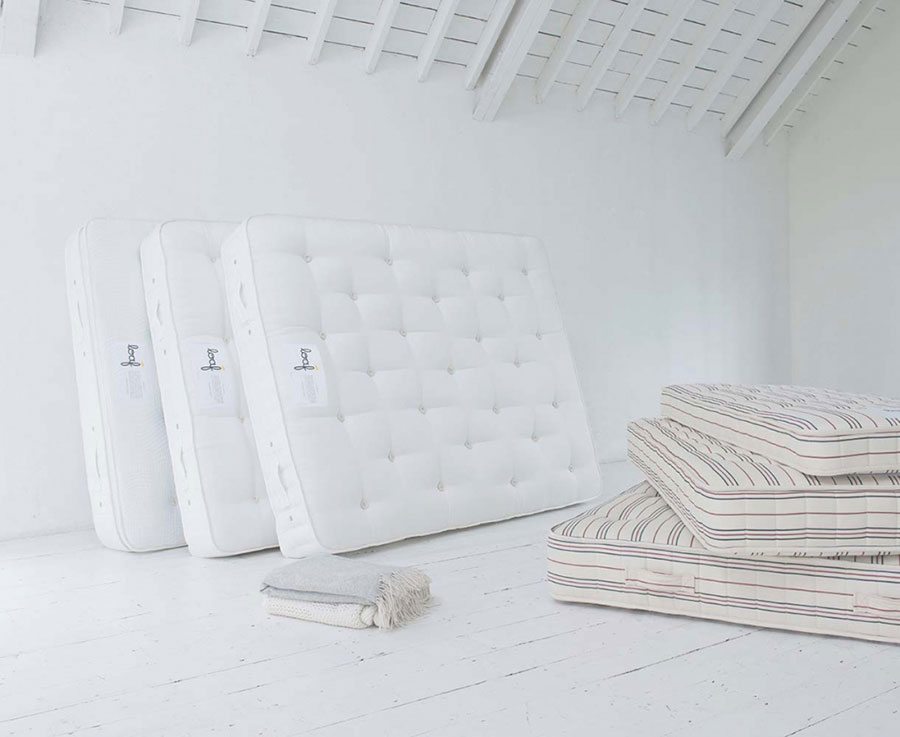
These pocket-sprung mattresses from Loaf are all handmade in Wiltshire and packed full of natural fillings such as cotton so you won’t overheat. Prices start from £345.
Source a sprung mattress
In the UK, we generally prefer mattresses with sprung interiors. There are three types: open sprung, continuous sprung and pocket sprung. “Each option has its own pros and cons, depending on how you sleep and what you are looking for from a mattress,” says Sally Hancox, head buyer at Soak & Sleep.
Open-sprung mattresses are the most affordable option. They feature hourglass-shaped springs that are arranged in rows and connected to one another, top and bottom, by wire with an outer rod that strengthens the perimeter.
More expensive – but generally more comfortable – is continuous-sprung mattresses. These are made from a single length of wire “knitted” into a series of interwoven springs that usually run up and down the bed and are linked vertically rather than horizontally. According to the Sleep Council, the wire used is softer and the size of the coils is smaller than an open-sprung mattress, giving a higher spring count and a more responsive feel.
Pocket-sprung mattresses are great if you share a bed. The pockets in which each spring is encased mean that they work independently from each other. As a result, there will be less movement across the mattress and both people will sleep better.
“Pocket-sprung mattresses are a more luxurious take on open-sprung mattresses,” explains Sally. “Although a little pricier than the other options, a quality pocket-sprung mattress will offer comfort and support for many years.”
“Remember, when it comes to pocket springs, it is quality over quantity,” adds Charlie Marshall, founder of Loaf. “Having a gazillion springs is no use if they’re all spindly, but sturdy English or German springs will give you the support you need.”
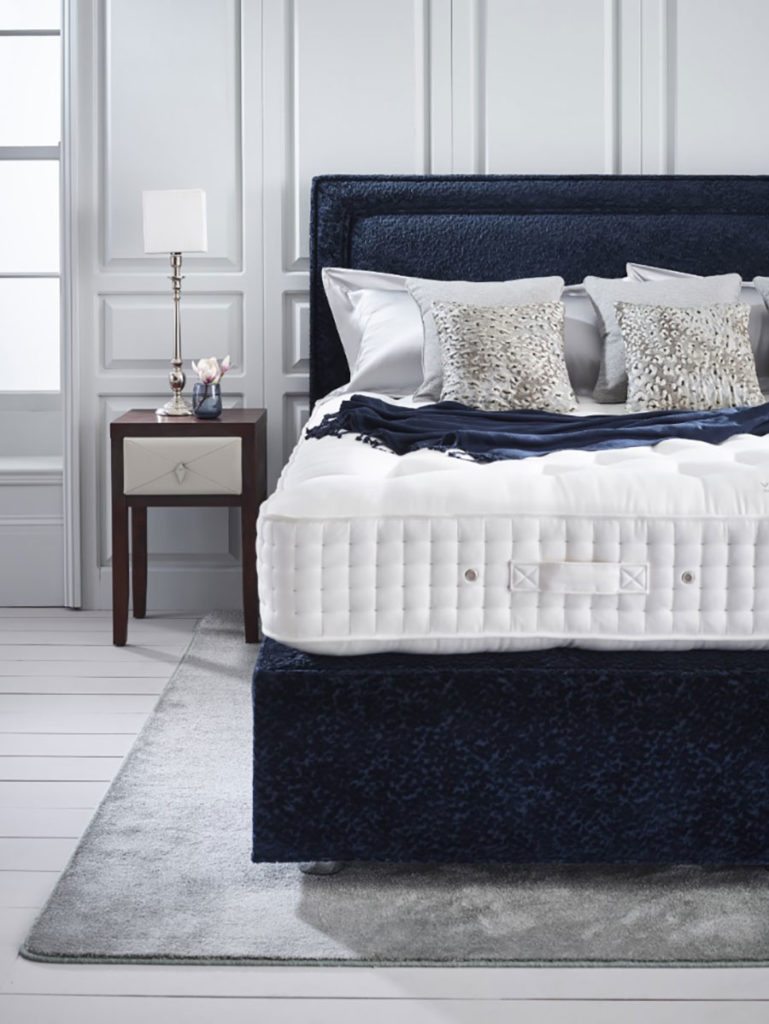
The Signatory contains cashmere, Shetland Isle wool and horsehair, which blend to provide an excellent level of comfort and support. The king-size mattress seen here is £11,715.
Focus on fillings: au natural
You’ll find sprung mattresses with a wide variety of filings. Look for natural materials, which have excellent properties when it comes to comfort, durability and longevity. “They allow the bed to breathe, creating the perfect sleeping conditions,” says Ana Mladenovic, store manager of Hästens Chelsea.
“Few materials can match horsehair when it comes to constructing a bed,” Ana continues. “Every single curled strand of horsehair is like a tiny spring, enhancing the work of our spring systems, providing support and pliability.”
Horsehair comes with its own built-in ventilation system, transporting any excess heat and moisture from your body, allowing you to enjoy deep, uninterrupted sleep at the perfect temperature. What’s more, horsehair is organic and has natural antibacterial, anti-fungal and anti-mite properties that contribute to a healthy sleeping environment.
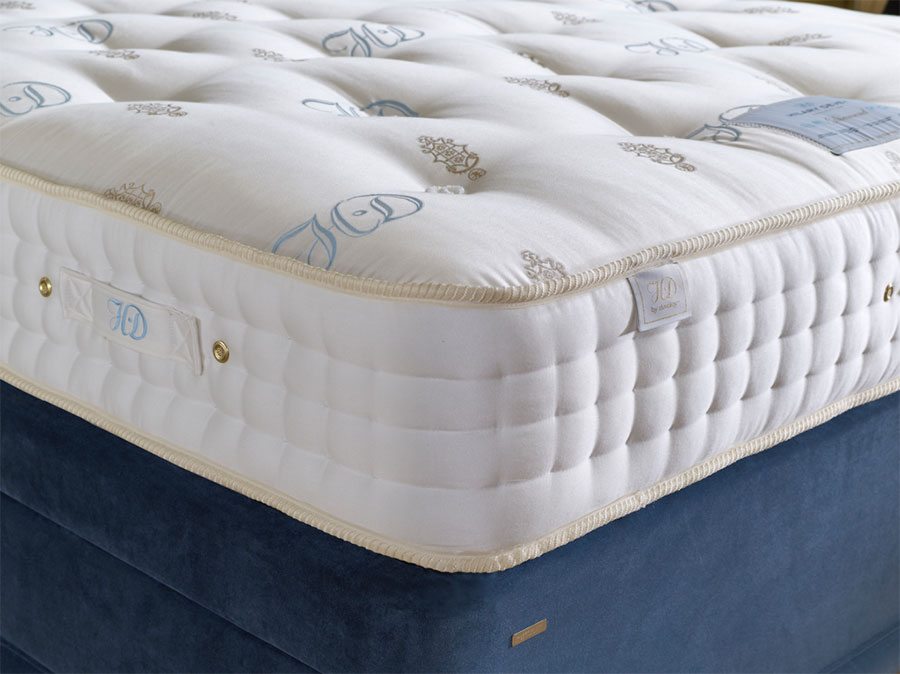
Part of the Hilary Devey Collection, the Diamond mattress remains a best seller thanks to features such as 2000 individually nested pocket springs and a winter and summer side. Prices start at £650 for a single.
What about wool?
Wool is naturally strong, water-resistant, hypoallergenic, and resistant to dust mites, mould and bacteria growth. It also helps to maintain a perfect temperature: on cold nights its insulating properties trap dry air and warmth, while in warm temperatures it draws in air, which removes excess heat and moisture from the body.
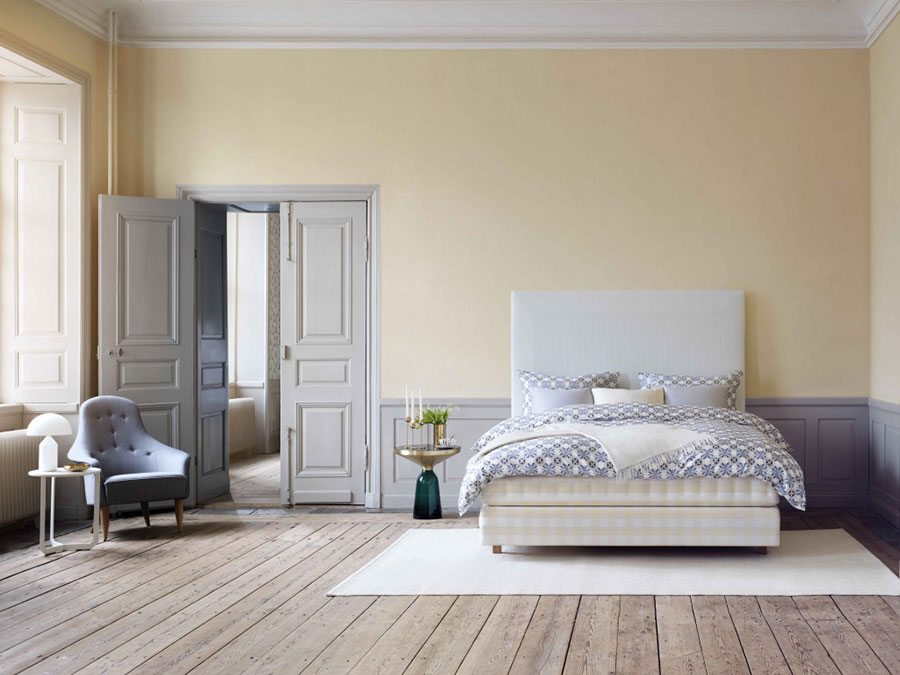
The Hästens Auroria mattress features a striking gold-check ticking. Priced £17,30, it is handmade to bring pressure relief and support to your upper body and hips.
The best of the rest
Other materials to look for include silk, cashmere and mohair. All are used for additional luxury and insulation. Cotton is also popular, largely because it has a soft feel and can breath as well as absorb moisture.
Hästens beds also include flax, known for its durability and flexibility. “According to studies, static electricity can cause headaches, dry mucus membranes and itchy skin. An overcharged human body can also attract undesired particles from its surroundings, which may cause or irritate allergies,” explains Ana. “Flax diverts static electricity, so by using it in carefully calculated layers in our beds, we remove static electricity from your body.
“Furthermore, flax is a fantastic noise and vibration absorber, contributing to a rejuvenating night’s sleep that allows your body to regenerate in peace and comfort,” Ana continues.
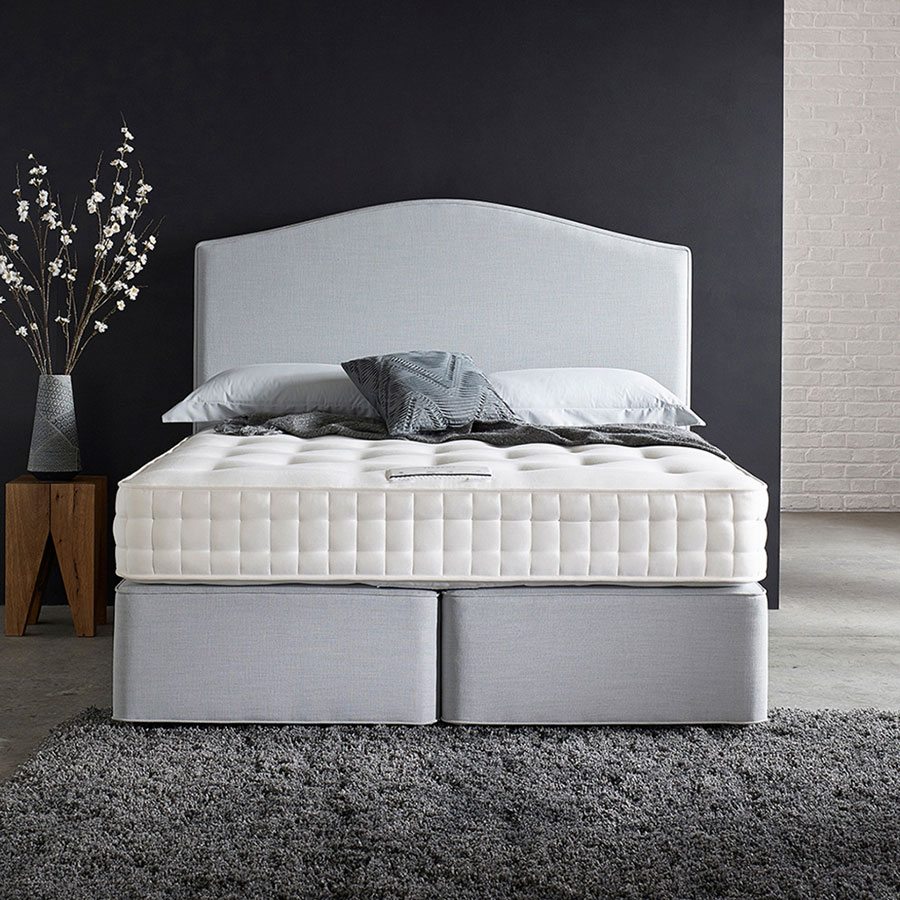
The Viceroy mattress from the Somnus Supremacy range contains natural cotton and British eco wool and Hemptex. Shown with the Surrey headboard in flax grey, it is available at Barker & Stonehouse.
Non-sprung mattresses
Foam mattresses are made from layers of different densities of foam. One of the most popular options is visco elastic, or memory foam, which is temperature-sensitive, meaning that it reacts to your body heat and moulds to your shape as it warms up.
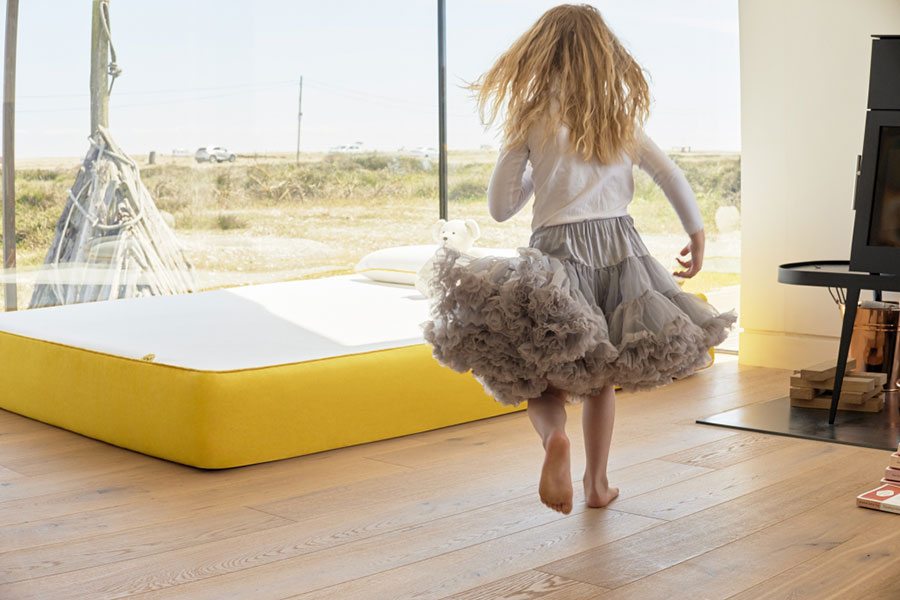
A memory-foam mattresses from eve offers comfort, coolness and durability. Priced from £349 for a single.
The pros and cons of foam
Memory foam provides great support because it distributes your body weight evenly. “Because your body is supported fully, you toss and turn less and so many people say they get a better quality of sleep,” says Kuba Wieczorek, co-founder of eve. “And memory foam is inherently anti-microbial so doesn’t harbour dust-mites as spring mattresses do.”
Overheating can be an issue with memory foam mattresses, but eve says it has addressed this by incorporated a breathable, cooling mid-layer. “It’s 30% more breathable than traditional memory foams. Because the air can circulate more freely, it cools the sleep surface,” explains Kuba. “Also, we use next-generation memory foam, so the eve mattress has more ‘spring’ – meaning it doesn’t stick to the body, which can lead to the overheating complaints associated with traditional memory foam.”
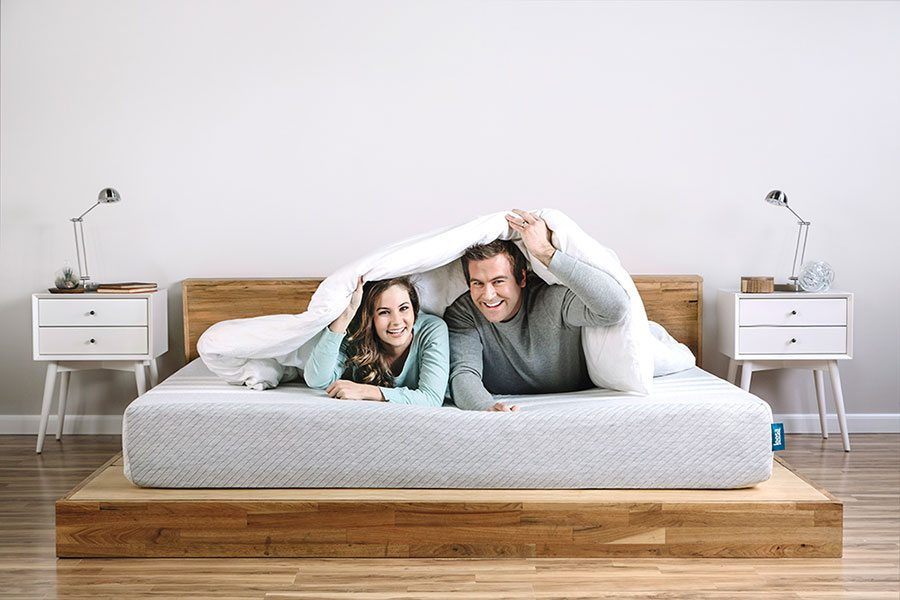
Try before you buy: sleep on a Leesa foam mattress for 100 nights. If you don’t like it, simply send it back. Prices start from £390 with free UK delivery.
Click here to read our buying guide to a better night’s sleep.